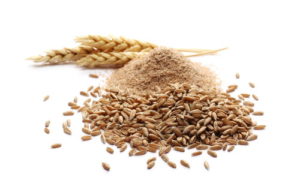360 SHS Introduces Sherry!
360 SHS Introduces Arianna!
360 SHS Introduces Maria!
360 SHS Introduces Teresa!
360 SHS Introduces Cynthia!
What to Look for When Buying Whole Grains

When you’re at a grocery store, looking at all the food and their labels can be overwhelming. You want to eat better, but how can you keep track of all the different names for nutritious aspects of food. There are a few quick and easy tips when it comes to buying whole grains.

What to Look for When Buying Whole Grains
Experts recommend that adults should eat 48 grams, or three servings, of whole grain a day. Why? Whole grains are high in fiber and other nutrients. Fiber is essential to have regular bowel movements. No one wants to be constipated.
It also helps lower the risk of heart disease, Type 2 diabetes, obesity, and other health issues.
How can you add whole grains to your diet? Some common examples include using a slice of 100 percent whole grain bread, a half cup of oatmeal, or a half cup of cooked brown rice with different meals.
Sadly, you can’t find whole grain servings listed on the Nutrition Facts panel on packaged foods. There are ways to identity whole grain foods.
Look for food with a whole grain stamp, which was created by the Oldways Whole Grains Council. It’s a consumer advocacy group. The stamp is yellow and has perforated edges that looks like a stamp you’d use on mail.
It comes in three forms, showing different levels of whole grains.
There’s 100 percent whole grain, which means it is completely whole grain. It should have a minimum of sixteen grams a serving.
50 percent plus whole grain means that of the grain in the product, at least half is whole grain. It has to have at least eight grams a serving.
If a package just states whole grain, then it will have eight grams of whole grains a serving, though it might contain more refined grain than whole.
Fun fact, The Whole Grains Council has used the stamp on over 13,000 products in 61 countries.
Another way to look for whole grain is to see if it’s the first or second ingredient listed. Ingredients are listed in descending order by weight.
Whole grains are made of three main components, the bran, the germ, and the endosperm. The bran and the germ are the most nutritious parts.
What Labels to Ignore When Buying Whole Grains
- Multigrain- It means a mix of whole grains, refined grains, or some amount of each.
- Made with whole grain- Not specific enough, it could be made with just a little whole grain and still able to say this.
- Stone-ground- This doesn’t tell you anything about whether the grains are whole or refined. This label is talking about a type of mill that used to make the flour.
- Organic-The label applies to farming and production practices and doesn’t tell you if there are whole grains in the product.
Read more here.
Why You Should Never Retire According to a Neuroscientist

Finding the right time to retire is an all too familiar struggle for people. Whether the decision is due to money or lack thereof, or just simply wanting to keep working, it’s a personal choice. Though according to neuroscientist Daniel Levitin, you should never retire.

Why You Should Never Retire According to a Neuroscientist
According to Levitin, even if you are physically impaired, you should keep working in a job or as a volunteer.
Too much time spent with no purpose is connected to unhappiness. This doesn’t mean doing busywork. It means finding meaningful activities. Between 25 and 40 percent of people who retire, go back into the workforce.
Levitin interviewed people between the ages of seventy and one hundred to understand better how not retiring increases life satisfaction. A seventy-one and eighty-year-old actually increased their workload. A ninety-nine and eighty-four-year-old changed their schedules to accommodate any age-related slowing.
Some older adults shifted their priorities so that they can work and get things done. One woman, age seventy-eight, rejects many of the tests her doctor orders because she doesn’t want to waste time on something that could add a few weeks more to her life.
You can go back to school to learn something new, start a book club, or create other events that allow for interactions with others.
American Workforces Need to Be More Flexible
Of course, for a lot of people, not retiring means working. Most employers will allow older adults to modify their schedules so they can continue working. Employers are required (in the US) to make reasonable accommodations like start and end times, break rooms, or even a cot to lie down on for a nap.
Overall though, corporate America has an ageism problem. Many older adults struggle to find a job or get promoted. It’s not uncommon to see age-based discrimination despite it being illegal.
What businesses should understand is that multigenerational teams tend to be more productive. Deutsche Bank noticed this and paired up older and younger adults. They say fewer mistakes were made, and there is more positive feedback from employees.
If You Can’t Work, Volunteer
If you either can’t continue doing your job or aren’t able to find a job, there are still ways to do meaningful work. Become a volunteer for a cause that you believe in or that uses your skills. Some people have read to underprivileged children, others have tutored children, some people make blankets and hats for premature babies.
There are infinite possibilities.
In a study, volunteers felt a greater sense of accomplishment and showed an increase in their brain volume for the hippocampus and cortex. The study showed that it could even reverse signs of aging in men.
Read more here.

